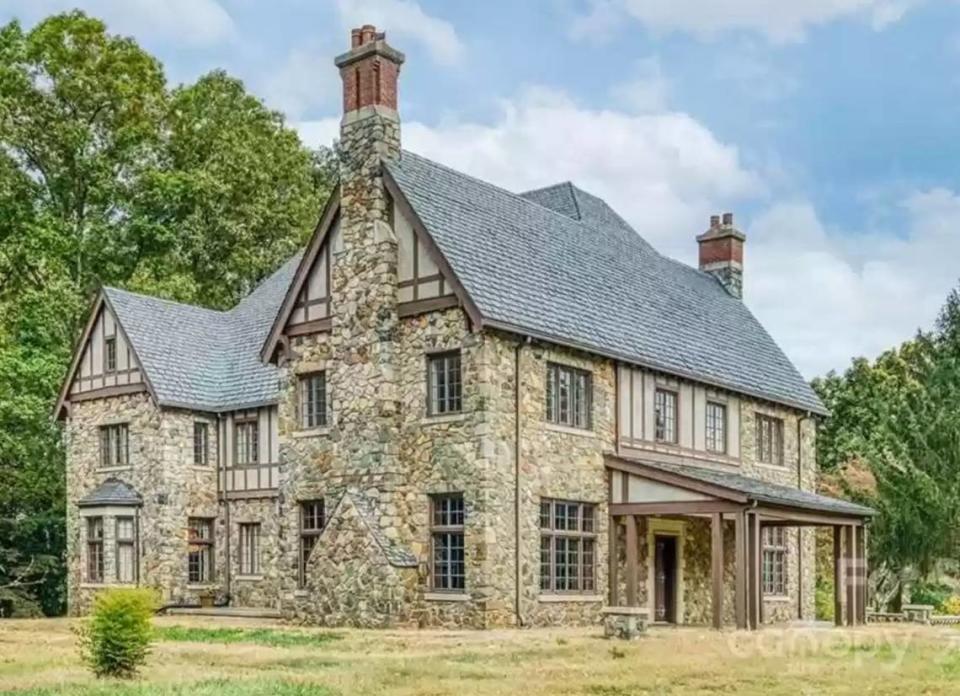Providence Day is buying an 86-year-old mansion. Preservationists want it saved
Providence Day School has a purchase agreement to buy a historic house near its campus in southeast Charlotte, a move that has preservationists worried about the future of the 86-year-old estate.
The private institution confirmed its interest in the Akers Estate at 6501 Sardis Road to The Charlotte Observer. Its value is $4.9 million and sits on 6.4 acres in the Stonehaven neighborhood, according to online real estate listings.
But neighbors and a Charlotte-Mecklenburg Historic Landmarks Commission committee want to see the home become a historic landmark to save it from potential development or demolition.
Michael Hoppa grew up behind the house and doesn’t want to see it go away. “We’re setting a bad example in Charlotte by tearing down all of our historic buildings to begin with,” he told the Observer. “Any chance that we can save one is ultimate win for the city and its history.”
The deal has not closed yet, Providence Day said in a statement. “The school is always looking for innovative ways to be a part of the greater Charlotte community while expanding opportunities for our students.”
The school did not address its plans for the site in its statement, and declined an interview request.
Dan Morrill, a local historian who wants to see the building preserved, said there is local speculation that the school may use the property for an athletics site. He said this would not be compatible with the retention of the house.
Akers Estate is currently owned by Susan Blanton Senn and the Trust of Emory H. Blanton, according to county records.

About the historic Charlotte mansion
The mansion was built in 1937 for James Akers, an insurance executive, and his wife Nancy Akers.
Architect Louis Asbury Sr. designed the home along with other several other Charlotte properties in the early 20th century. His work includes the Mecklenburg County Courthouse on East Trade Street and the Myers Park Methodist Church with a Gothic revival style, said Preserve Mecklenburg, a real estate preservation group that works to save historical sites in the area.
Inside features include a mahogany paneled dining room, bathrooms tiled in pigmented structural glass, a higher-end finish than ceramic tile. The exterior was made from local fieldstone and includes an English slate roof.
At a meeting last Wednesday, a survey committee for the Historic Landmarks Commission voted to place the property on a study list of prospective historic landmarks.
Tommy Warlick, consulting preservation planner for the commission, said the property is already a landmark for the neighborhood since it holds a significant place in the landscape that was once a rural country setting. Warlick said the commission reached out to the school about its intentions for the site, but did not get a response.
Committee member Timothy Brown said another house and a garage on the property that could be more than 100 years old should be added to the study with the mansion. “It’s almost like a time capsule in its originality,” he said about the estate.
Warlick said the building is a good candidate to be used for something else beside a living space. “It would be a shame to lose this opportunity and for the city to lose a building like this,” he said.
Morrill, who also is a Preserve Mecklenburg board member, said he hoped the building was going to be used for educational purposes after Providence Day showed interest.
“It’s a magnificent piece of architecture and it’s in very good condition,” Morrill said. “I deal with a lot of buildings that are not in great condition. This one is.”
Landmarks commissioners will continue discussions in December to fund a report documenting the significance of the property. From there, the commission will make a decision to send the historic landmark request to the Charlotte City Council in January.
Morrill said Providence Day can not demolish the house for 180 days if it’s officially approved by the Historic Landmarks Commission. Within that time, if the city votes to make it a historic landmark, there’s an additional one year delay on demolition.
“It does not guarantee that it will be saved, but it does delay demolition,” Morrill said. “Basically there could be cooler heads to come to bear to try to seek a preservation solution for the property.”
Losing historic sites in Charlotte
Charlotte has a long history of knocking down historic sites as growth continued in the city.
For instance, the Thomas Trotter Building was part of Granite Row near the old Garibaldi and Bruns store on South Tryon Street. Built in 1850, it was owned by Thomas Trotter, a leading jeweler in Charlotte for more than 40 years. It was torn down in 1988 and replaced by Thomas Polk Park.
Another was the Query-Spivey-McGee building at 600 S. College St. that was built in 1902. The space was used for several services including agricultural supply, stables, auto repair, and as a mattress and upholstery company. It was torn down in 2018 for the JW Marriott Charlotte hotel.
And The Ritz Theater near Beatties Ford Road was build in the early 1960s for the Black community during the segregation era. It closed in the 1970s and was knocked down two decades later. It recently became The Ritz at Washington Heights, a pocket park with a stage, local art, play equipment and free WiFi.

